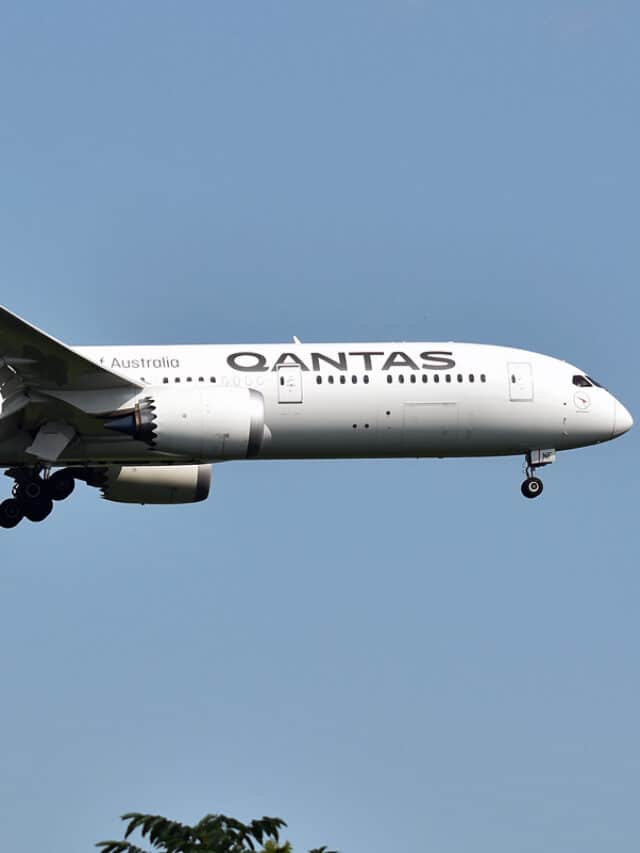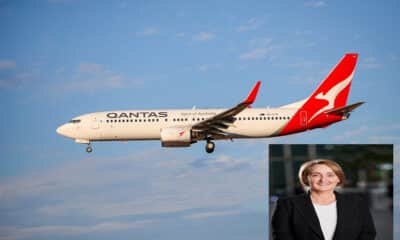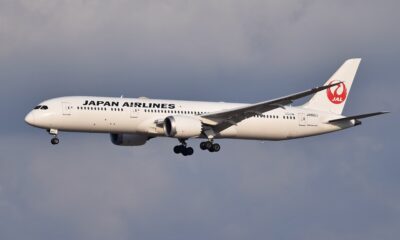Aviation
Qantas Groups pilots ‘fly-pink’ for breast Cancer Research.

Qantas Group pilots will FlyPink from 1 October, swapping out their normal gold epaulettes (shoulder stripes) for pink epaulettes, to show their support during Breast Cancer Awareness Month.
The Australian-first initiative was started by QantasLink Captain Susan McHaffie whose aunt was diagnosed and beat breast cancer. Joining the airline in 2013, Susan was inspired by the National Breast Cancer Foundation-branded pink QantasLink aircraft to find a way to raise funds and awareness for breast cancer research that would encourage airlines around the world to join together for the cause.
QantasLink Captain Susan McHaffie said she hoped her small idea would encourage other airlines to show their support.
“Together with Qantas, it is my goal to raise $20,000 for breast cancer research. I hope by next year I’ll walk past a pilot I don’t know in an international airport wearing pink epaulettes in support of breast cancer research,” said Captain McHaffie.
QantasLink Chief Pilot, Captain Nathan Miller said Qantas was proud to get behind all its pilots and the FlyPink initiative, which will see pilots donate money to don the pink epaulettes when they sign on for flying duty.
“Qantas is really proud to show our support for breast cancer awareness, and most importantly help raise vital funds for research,” said Captain Miller.
“As a global carrier, we hope we can help our pilots take the FlyPink initiative from Australia to the world and are challenging other airlines to join us.”
National Breast Cancer Foundation Chair, Elaine Henry, welcomed the initiative and said the proceeds from the Qantas FlyPink campaign would go directly to life-changing breast cancer research projects around Australia.



“Every day in 2015, 42 women in Australia are diagnosed with breast cancer, and it is still the biggest cause of cancer-related death in women globally. We believe that research is the key to eradicating the disease, and credit research with the many advances that have been made in breast cancer care and treatment over the past few decades,” she said.
Pink epaulettes will be available to all 3,300 Qantas Group pilots who are encouraged to donate $5 and wear pink with pride in October.
Qantas Group pilots will use the month of October to raise money through a number of other activities including National Breast Cancer Foundation collection tins in crew rooms and Qantas airports, and hold Pink Ribbon Breakfasts around the country.
QantasLink will serve food items in FlyPink branded boxes and brownies in support of the campaign.
Customers and other Qantas employees can support FlyPink by donating to www.flypink.net #WeFlyPink #showyoursupport
Qantas Group pilots who will wear pink epaulettes include Qantas, QantasLink, Jetstar, JetConnect, Cobham, Network Aviation and Express Freighters Australia.
Liked it ..?
Share with your friends and family.

Aviation
COMAC Unveils Plans for the C929 to Rival Airbus and Boeing

After the success of China’s first C919 aircraft, the country is setting its sights on developing a larger plane. COMAC (Commercial Aircraft Corporation of China) has officially confirmed plans to build a widebody aircraft, marking a significant step in its aircraft lineup.
Traditionally, Airbus and Boeing dominate the widebody aircraft market, with decades of expertise in developing planes and engines capable of carrying heavy payloads. China, which currently relies on imported engines, is now aiming to challenge these giants with its own widebody jet, the C929, designed to compete with the Airbus A350 and Boeing 777.
American Airlines Is Looking for Flight Attendants: Apply Now
The C929 will be China’s first independently developed long-range widebody aircraft. It adheres to international airworthiness standards and boasts independent intellectual property rights. The baseline version is designed to seat 280 passengers and offers a range of 12,000 kilometers, catering to global demand for both regional and international air travel.
Russia, which also needs reliable narrowbody and widebody aircraft, could become a key customer for the C929. Additionally, China plans to target the broader Asian market as it continues to expand its aviation capabilities.
Close Call at Heathrow: BA Flight Narrowly Escapes Drone Collision
China’s aviation progress includes the ARJ21 (now called C909), a regional jet with 100 seats for shorter routes, and the C919, a narrowbody jet with 180 seats designed to rival the Boeing 737 MAX and Airbus A320. Both models have found increasing demand in the domestic market.
At China’s largest air show in Zhuhai, COMAC announced that Air China will be the launch customer for the C929 widebody jet, though details about order size and delivery timelines were not disclosed.
Other major deals announced by COMAC include:
- Hainan Airlines: Firm orders for 60 C919 and 40 C909 regional jets.
- Colorful Guizhou Airlines: 30 C909 jets, with 20 firm orders and 10 provisional agreements.
The C929, renamed from the CR929 after Russia withdrew from the joint development project in 2023, is expected to carry 280–400 passengers with a range of 12,000 kilometers, competing directly with Boeing’s 787 Dreamliner.
According to COMAC’s deputy general manager, Tong Yu, the first fuselage section of the C929 is expected by September 2027, with prototype test flights anticipated soon after.
-

 Aviation2 months ago
Aviation2 months agoMicrosoft Flight Simulator Raises $3 Million to Bring Back the An-225 Mriya
-

 Airlines2 months ago
Airlines2 months agoQantas Engineers Stage Walkout Over Cost of Living Concerns
-

 Airlines2 months ago
Airlines2 months agoQatar Citizens Can Travel to the United States Without a Visa
-

 Aviation2 months ago
Aviation2 months agoQatar Airways bans these new Electronic Devices on plane
-

 Airlines2 months ago
Airlines2 months agoJapan Airlines Rolls Out Free Domestic Flights to International Passengers
-

 Defence2 months ago
Defence2 months agoWhich Country Has the Largest Fleet of Fighter Aircraft?
-

 Airport2 months ago
Airport2 months agoWestern Sydney Airport Welcomes Its First Plane After 6 Years of construction
-

 Aviation2 months ago
Aviation2 months agoDid you know ? Once Boeing 747 carried 1088 passenger in 1991








